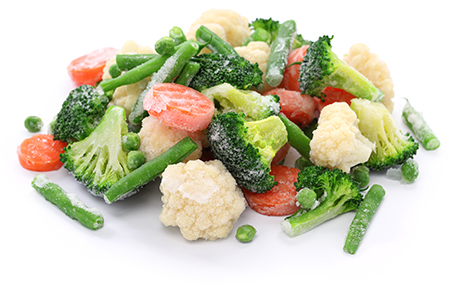Global Demand for Frozen Foods Heats up
In countries around the world, global interest in frozen foods has truly taken off. Demand for frozen ready meals, fruits and vegetables is at an all-time high, and the market is expected to continue to grow in the coming years.
 Research indicates that the global frozen food packaging market will reach nearly USD 9 billion by 2019, growing at a CAGR of about 5%. Frozen ready meals currently account for more than 30 percent of the total frozen foods market, but frozen potatoes and other vegetables, fruit, fish and seafood, soups, meat products and bakery-related items are also seeing increasing demand.
Research indicates that the global frozen food packaging market will reach nearly USD 9 billion by 2019, growing at a CAGR of about 5%. Frozen ready meals currently account for more than 30 percent of the total frozen foods market, but frozen potatoes and other vegetables, fruit, fish and seafood, soups, meat products and bakery-related items are also seeing increasing demand.
Meeting Multiple Needs
Frozen foods are well positioned to meet a myriad of consumer needs. Today, several important drivers are pushing the growth of the frozen foods market:
Convenience. Perhaps most importantly, frozen foods help to meet growing consumer demand for convenient snack options and ready-to-cook meals. As they go about their busy days, consumers want to know that they have quick and easy access to delicious food when they need it. Frozen meals and snacks provide convenience at home and work. And as individuals, restaurants and retailers buy more staple food online, freezing technologies help to ensure that these products arrive safely, even if they are being shipped across the globe.
Health and freshness. Another key benefit of frozen foods is that the freezing process helps to preserve a food’s vitamins and minerals, without the use of preservatives, appealing to the growing demand for “clean” and healthy ingredients and foods. Plus, frozen food is better protected from food spoilage than many fresh foods.
Global economic progress. Worldwide economic growth and rising incomes are also prompting more consumers to reach for frozen foods as individuals begin to prioritize convenience over price. According to GrandView Research, Europe’s frozen food market accounts for more than 35 percent of total revenue, while Asia Pacific is expected to see the highest rate of growth, due to the expansion of fast food restaurants in several countries.
Technology advancements. New film types and improved packaging designs have also enabled the frozen foods market to thrive, enabling manufacturers to distinguish themselves and meet consumer demand with innovations such as tear-notch openings, sealable zippers and single-serve packaging.
Unique Packaging Needs
While frozen foods present exciting potential for manufacturers, the products require special packaging considerations to ensure the food stays fresh and safe. Several important considerations come into play when working with frozen foods:
Food safety: When frozen foods are exposed to heat or light, they can easily thaw, which creates food safety concerns. To remain compliant with food-safety regulations, manufacturers should select packaging that encourages temperature stability and helps prevent degradation.
Durability: Of course, durability is paramount. If a package easily tears or opens, the food inside is compromised. Consumers, retailers and restaurants want to rest assured that their frozen foods aren’t going to cause messy and unsightly leaks.
Quality: If light, oxygen or moisture permeates the packaging, the food may lose flavour, texture, colour and even nutritional value.
Promotion: Frozen foods packaging is a prime opportunity to catch the eye of the consumer. Key factors to consider for this segment include visual appeal and a convenient, “easy-to-cook” design. Consumers also frequently reach for products with transparent packaging design so they can view the quality of the food inside.
Selecting the Right Packaging Technology
As the frozen foods market continues to expand, manufacturers must act quickly to meet consumer demand. High-performance packaging technologies can help manufacturers succeed in the frozen foods sector by providing the flexibility, ease of use and hygienic design that they need to beat the competition.
To learn more about packaging technologies that meet the unique requirements of frozen foods, join us for part two of this blog series, “Top Considerations for Frozen Foods Packaging Equipment”.



 Español
Español  Português
Português  Italiano
Italiano  日本語
日本語  中文
中文  Français
Français  Deutsch
Deutsch  Русский
Русский  العربية
العربية 





